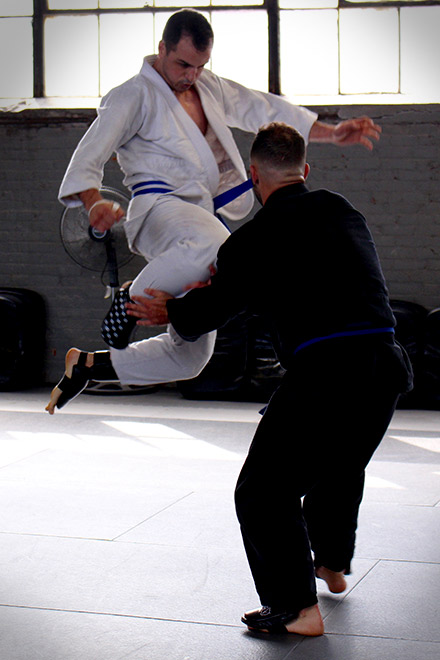The Martial Arts Aspects of Krav Maga

Articles On Krav Maga as a Martial Art
- The Path To Black Belt
- Personal Responsibility, Blame & the One Stop Martial Arts Shop
- Combatives & The Martial Arts
- Martial Arts & The Movies
- What Has MMA Ever Done For Us
- Muhammad Ali
- Humility, Respect & Martial Arts Cults
- Lessons From Competition That Can Be Applied In Real Life
- The Importance Of Breathing
- Where Traditional Martial Arts Get It Right
- Finding Your Way
- What The Pro's Don't Do
- The Value of Cross Training
- The Art of War
- Barefoot Training
- Misleading Martial Arts Musings
- Sacred Space
Blog Home Page
Is Krav Maga a Martial Art?
Whilst Krav Maga is often considered and looked upon as a martial art, many practitioners shun the word “art”, and prefer to think of the approach as a “system” of self-defense/fighting as opposed to an art. The reason behind this is that Krav Maga is not defined by its physical movements and techniques like most martial arts, and neither is its evolution and progression dictated by a set of rules. In traditional arts or systems, such as Karate, the techniques are contained in the Katas that were developed, and these pre-set forms of moves and movements define and identify a particular style of Karate. There is room for interpreting and applying the techniques/movements in a number of different ways (Bunkai) e.g., one move/technique could be interpreted and used in a number of different ways, however there is a starting point that is fixed and doesn’t change. In Judo, “new” throws have been developed, or introduced from other grappling systems, such as the Khabareli throw from Georgian Folk Wrestling (Chidaoba), which was renamed to Obi-Tori-Gaeshi. However, the throw to be allowed into competition had to fall within the rules of Judo. Krav Maga doesn’t have a “fixed” set of techniques, nor does its techniques have to meet certain sporting/competitive rules etc., which means it takes a very different approach to most martial arts.
Krav Maga is defined by concepts and principles, and it is these that guide its growth and development e.g., one idea in Krav Maga is to have a “hand-defense” and a “body-defense”, that is a hand movement that if performed correctly can deal with a threat completely (100%), and a body movement that can do the same. This means that if each one is only applied with a 50% success rate, there can still be a defense that is 100%. When long-barrel weapon (rifles etc.) disarms were first taught they involved a hand-defense, which involved grabbing the barrel, and pushing it upwards and away, and a body-defense that involved blading the body to pull it away from the line-of-fire and make it a smaller target etc. With 1930’s and 1940’s rifles grabbing the barrel was an option because these were often fired as a single shot at the time, giving the weapon time to cool down. With modern weapons that are used in a semi-automatic fashion, being fired in short, close bursts, grabbing the barrel ceases to become an option as it doesn’t cool down enough. Instead of being grabbed, the barrel is now patted/knocked away, whilst a different body-defense is made. A totally “new” and original technique was created, but one that still stuck to the concept of hand-defense/body-defense.
Whilst Krav Maga, may not be technically, defined as a martial art, in the way that other fighting styles are, at some point it must be trained as an “art”, in order for a practitioner to improve their fighting skills e.g., if a practitioner is to improve their ability to punch fast and hard, they must work on the art of their timing, and on the art of their movement etc. To improve hand speed, it is worth studying how boxers develop these skills and replicate some of these methods. To improve throwing, it is worth looking at the drills Judoka practice etc. So there will come a point in a student’s training where they must study the “art(s)” of fighting in a manner similar to a martial artist, even though their overall approach to dealing with violence is somewhat different.